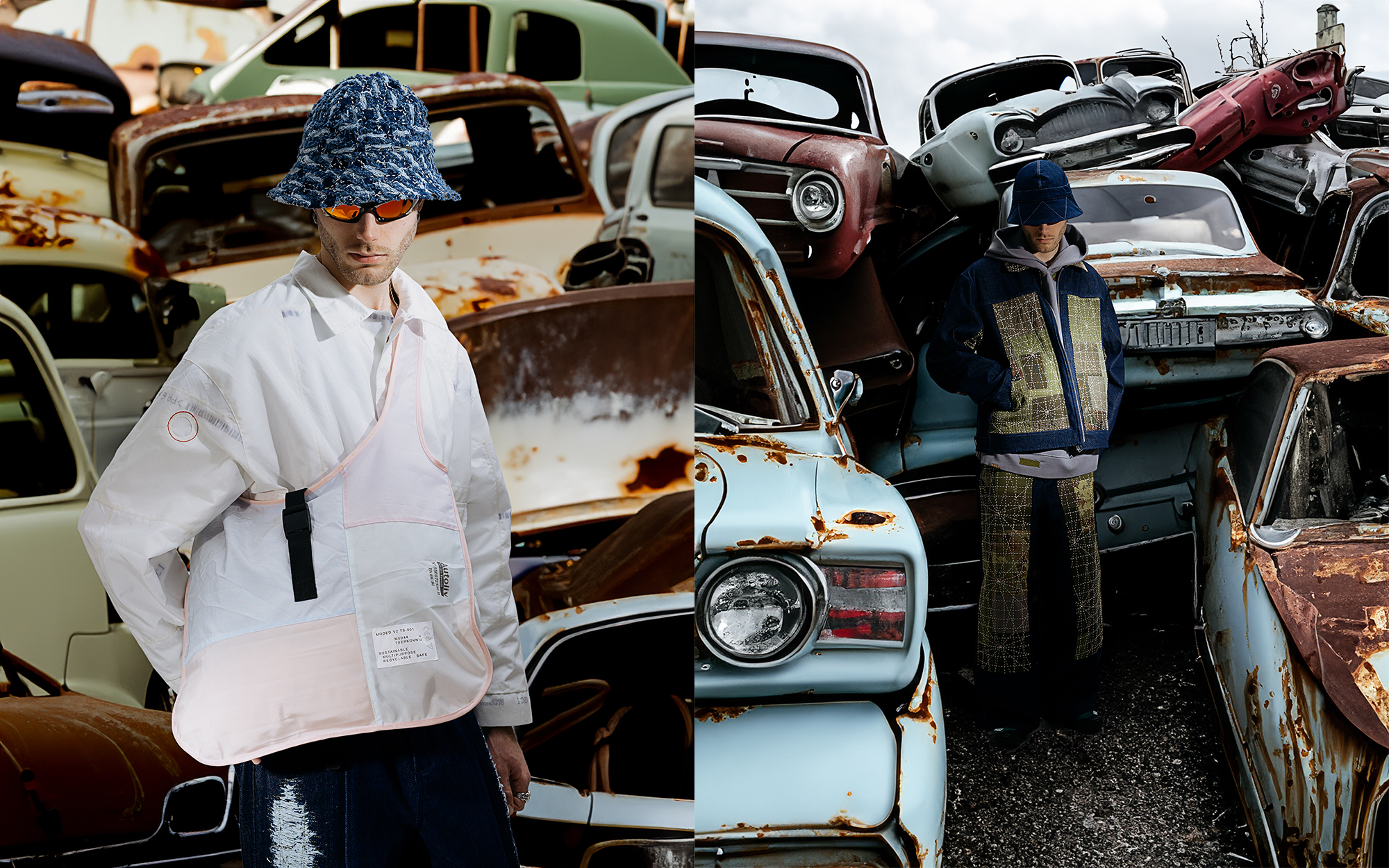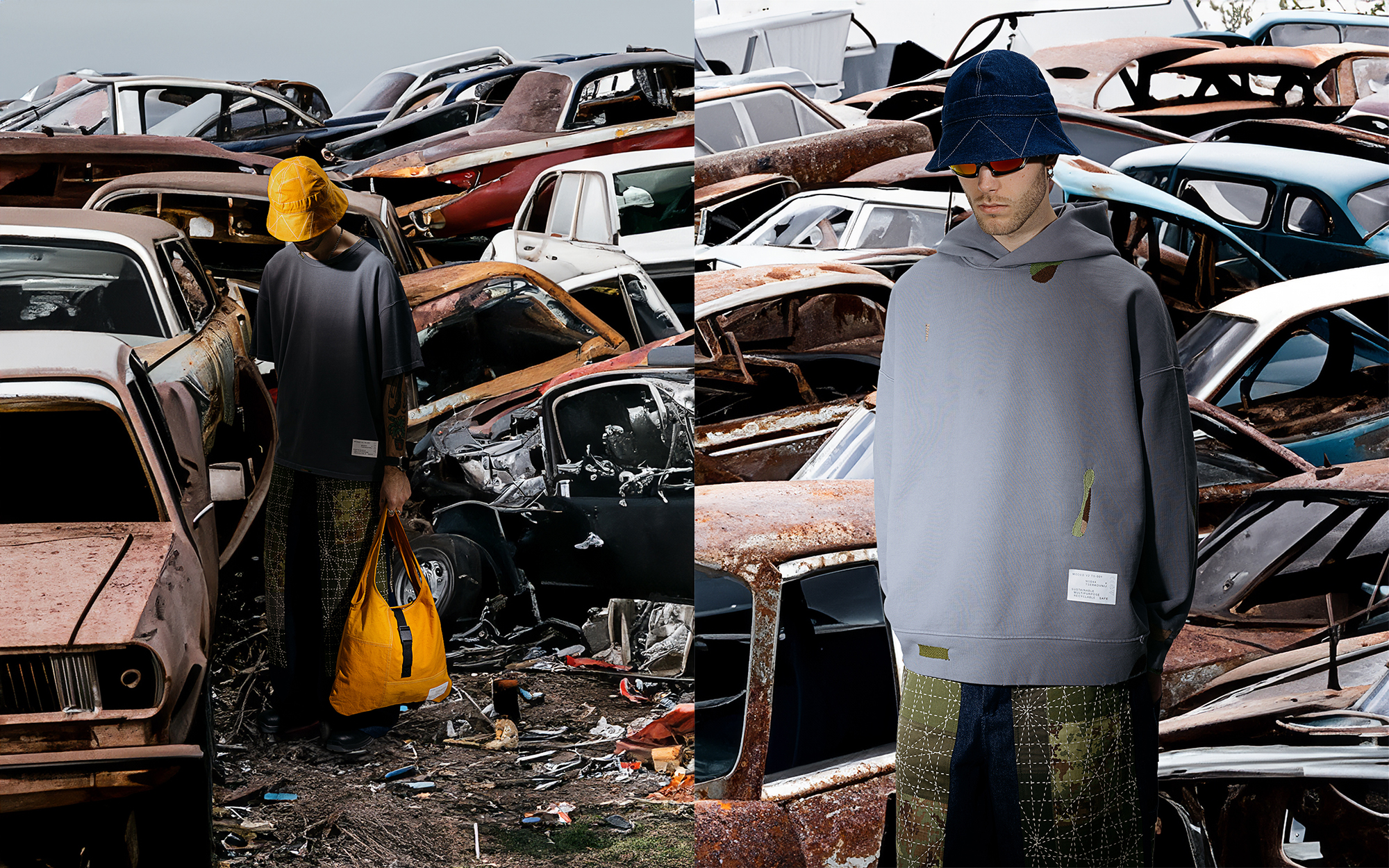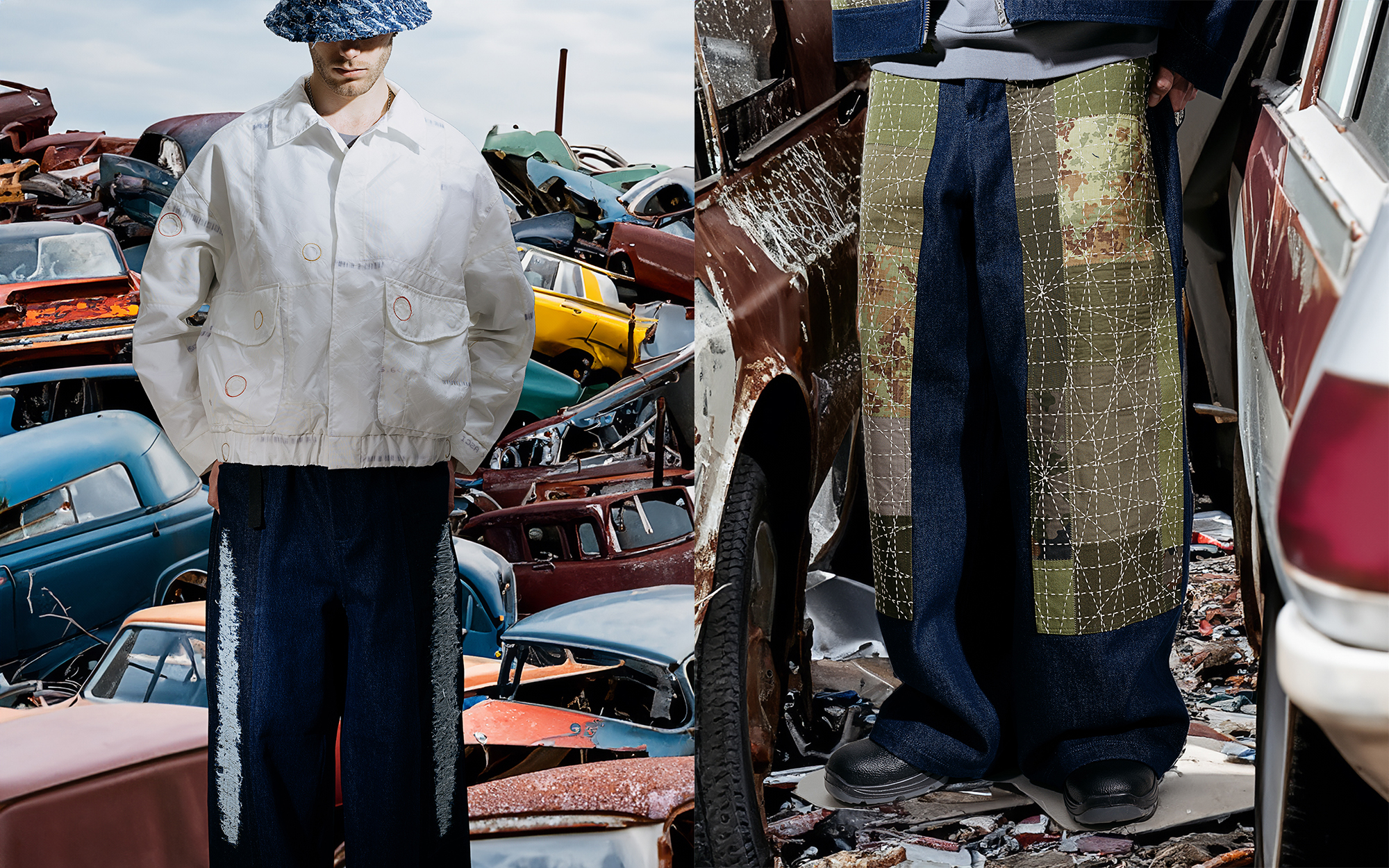Tserkovnij: "Heritage is the basis of the style of my childhood "idols.""
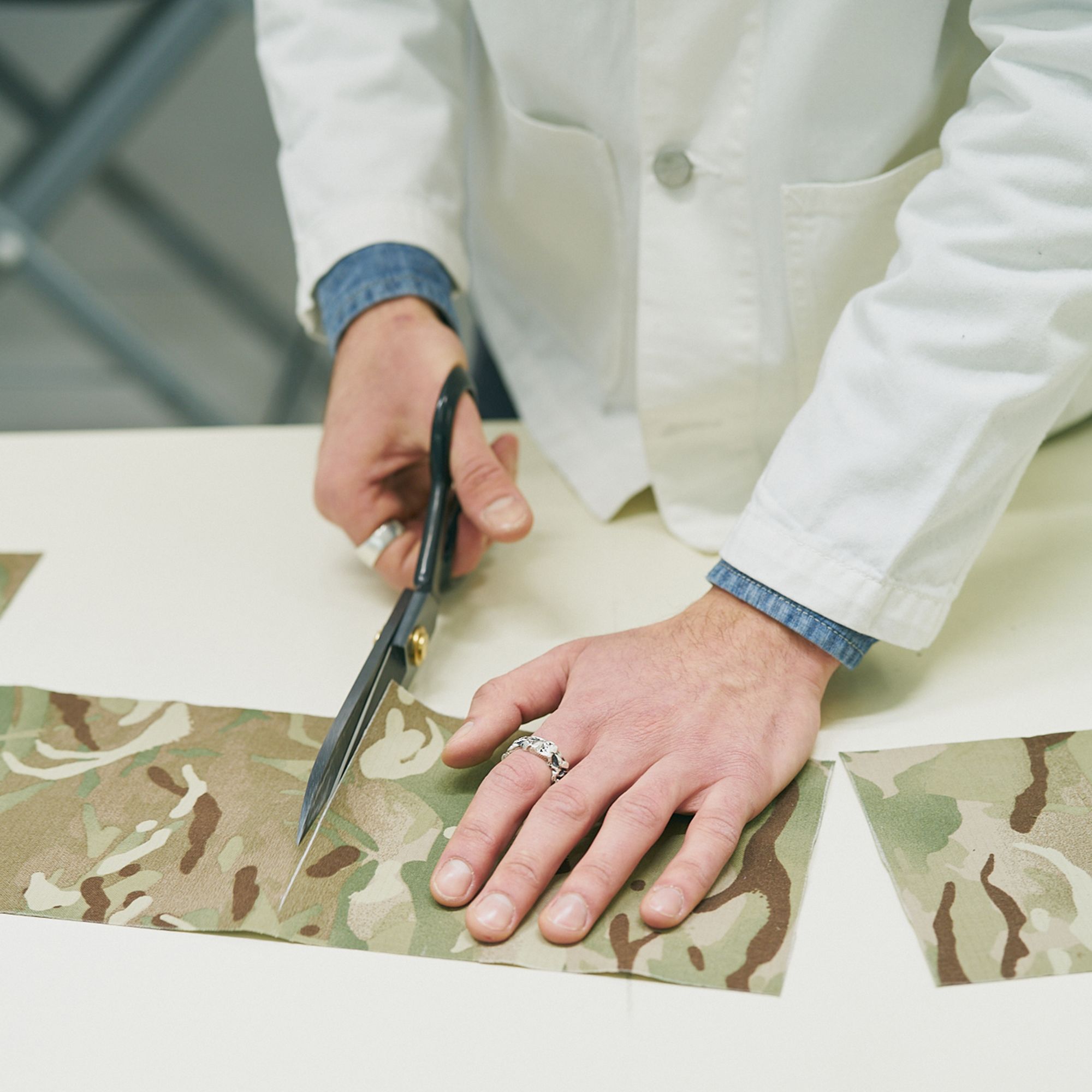
Tserkovnij is a young experimental manufactory where clothes are developed inspired by Western working aesthetics and its oriental metamorphoses. Simple utilitarian forms and "boro".
In our joint collection there is an emphasis on the traditional Japanese technique of Sashiko. For the creation of embroidery for all the items, the collection took several hundred hours and more than 15,000 heavy cotton thread. We asked Sasha about the studio and his approaches to work with clothes.
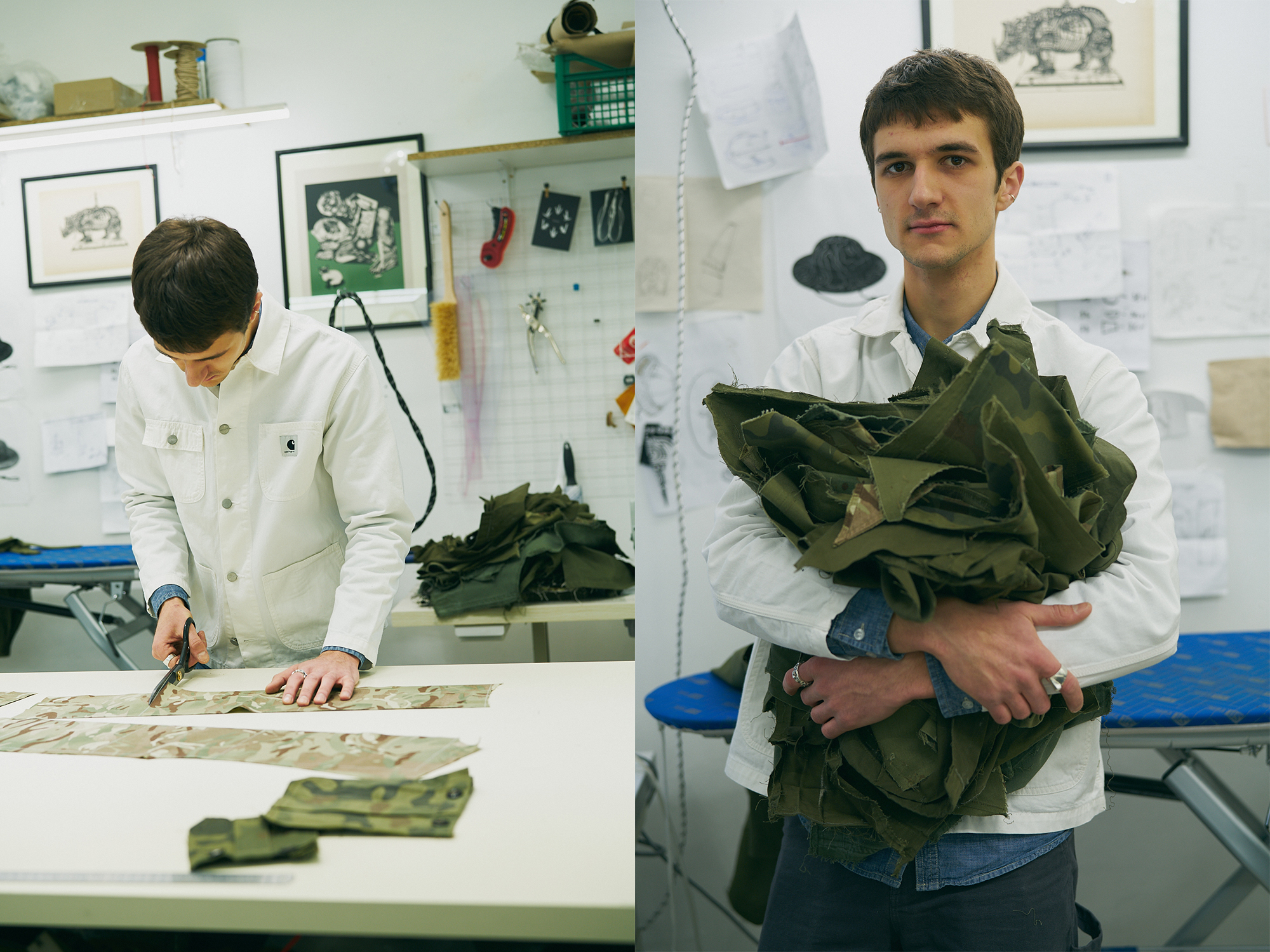
01. Tell us about your studio. Where did you start, and how many people work with you now?
Sometimes, describing what a Tserkovnij is problematic because it is only now beginning to take shape. But if we look at it conceptually, it is an experimental workshop where we develop clothes inspired by Western work aesthetics and their Eastern metamorphoses.
On the one hand, we work with simple utilitarian forms; on the other, we experiment with artisanal techniques. We focus on these "boro" techniques. I mean patchwork, dabbing, patching, sashiko, dyeing, etc. I am particularly interested in working with the textures that can be achieved in these ways. If before I was looking for ready-made material with a natural fade, now I try to add additional "volume" to it all through manual processing.
The team is just getting started. Recently, there have been three of us. However, until the end of the 23rd year, I worked on development alone and outsourced replication. My girlfriend Arina altruistically created content for all this, and I thank her immensely!
02. Where does your story begin - why did you decide to work with clothes?
In short, the story is typical. As the saying goes in the movie Whiplash, "I listened to the greats."
At school, I felt an attraction to clothes. I was inspired by various Hollywood heroes, musicians of the 80s-90s era, skateboarding, etc. Everything that is inextricably linked to the American way of life. I dug into seconds, followed foreign masters, and romanticized tailoring. But he started for the first time in 2018 when I was 18—first, sewing courses, several years of self-study, a workshop at home, and so on.
03. Heritage aesthetics and Japanese culture inspire your brand. Why these referrals?
Heritage is the basis of the style of my childhood "idols." These clothes are iconic and utilitarian. I love that they're super easy and low maintenance. For example, I have been wearing the same shoes for five years. They've aged, of course, and I've already replaced the soles on them, but the patina adds life to them.
The Japanese are masters of preserving and restoring value. They organically imprint their tradition on the heritage. The Eastern approach and fanaticism made me fall in love with this business, so I followed them from the very beginning.
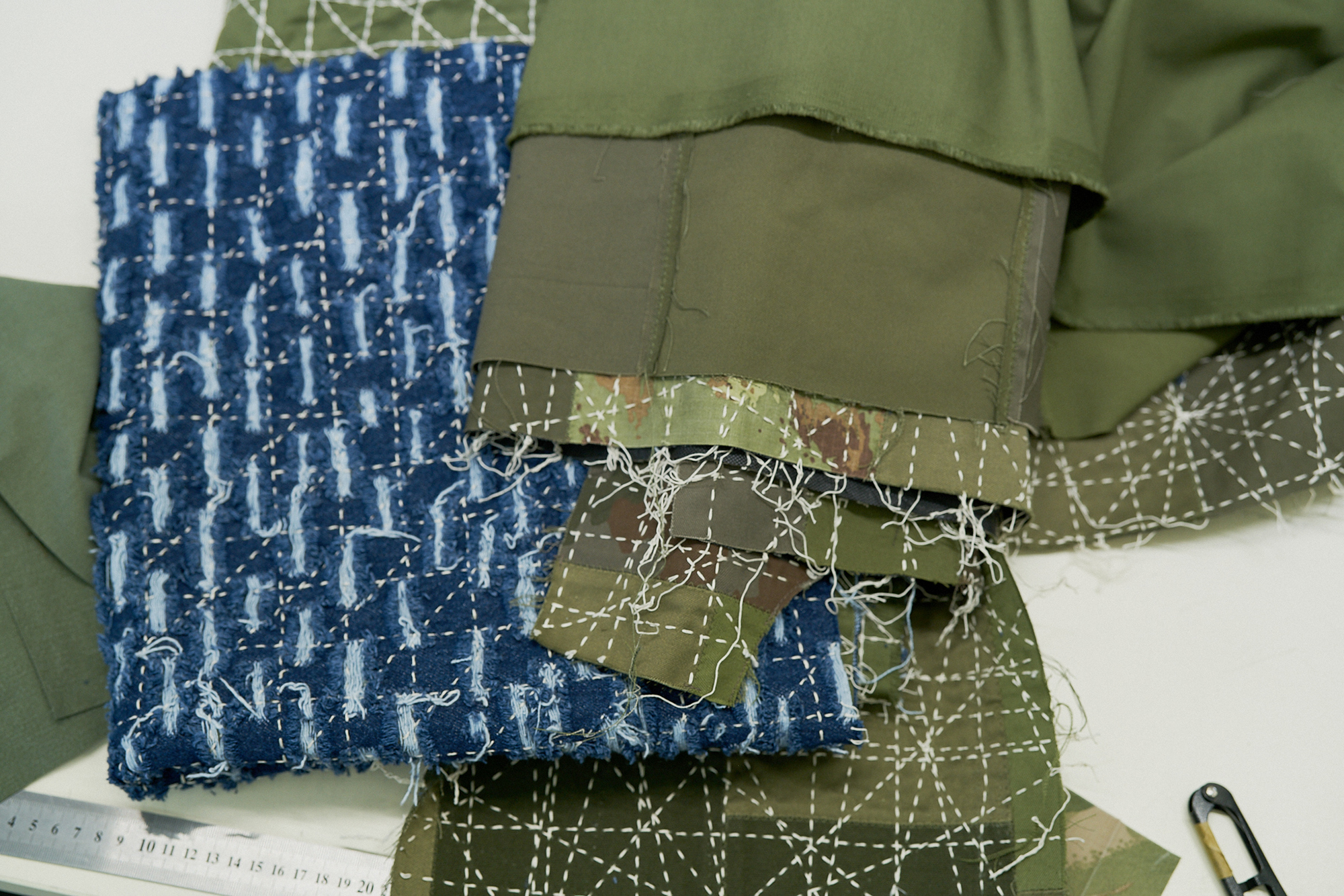
04. What is more important to you, utilitarianism or aesthetics?
I prefer utilitarianism. I am satisfied with the practicality inherent in heritage. However, in my project, I balanced these factors. On the one hand, I look at clothes as a tailor. The shape, the material's tactility, and the knots' processing are essential to me. On the other hand, I perceive fabric and threads as paint. I want to create a canvas from scraps and not give it any utilitarian form. That's what I'm moving towards.
05. Name your three favorite designers.
I follow projects more than people, so I don't know many names. Now, companies looking for and developing handicrafts for various purposes are of the utmost interest to me.
For example, "Gathering," "11.11," and "Proleta re art." I don't know who is behind them, but such projects are gold.
I also really like Hiroki Nakamura, the head of Visvim. His ideas and words often resonate with my thoughts.
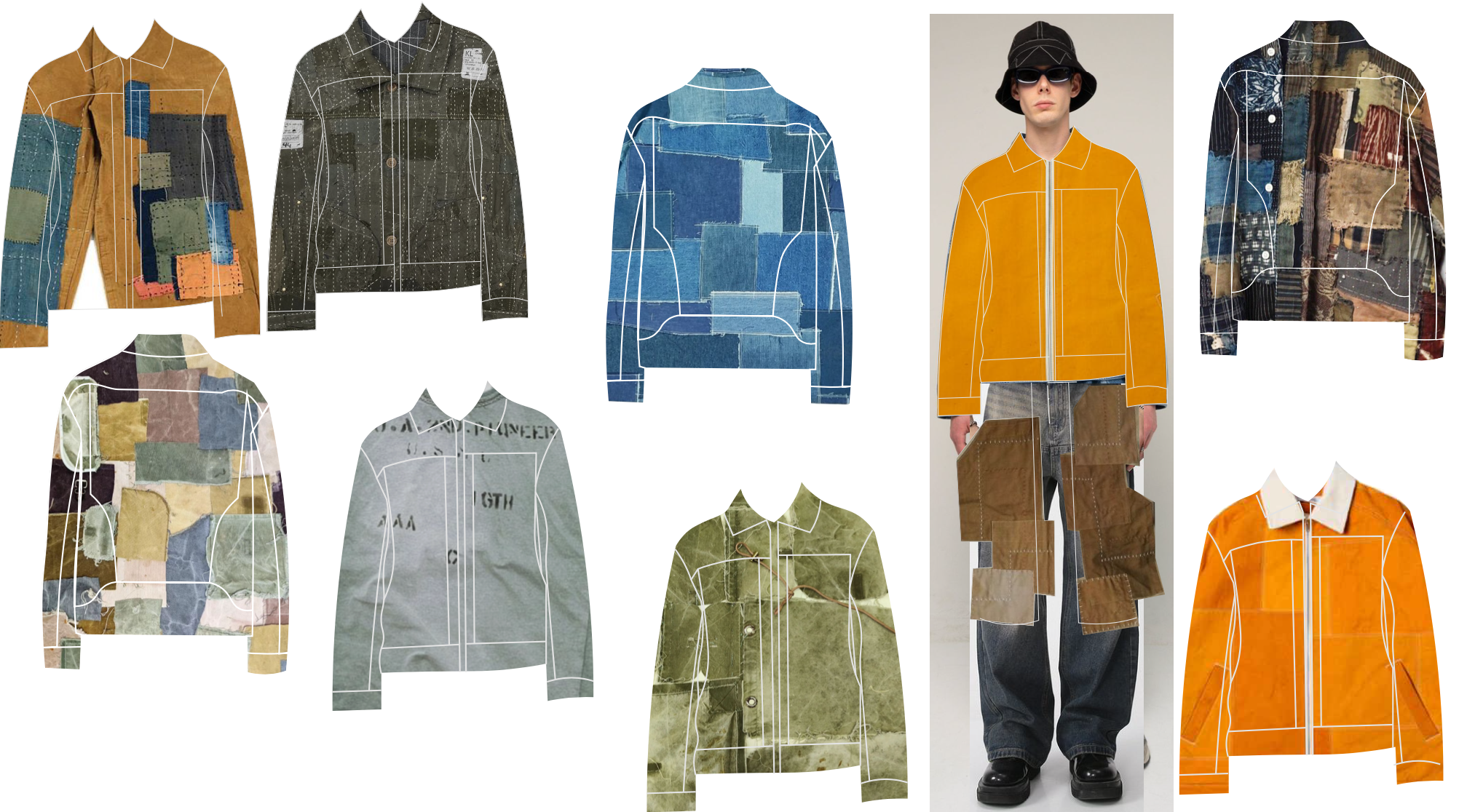
06. What materials do you like to work with the most? What would you like to try to work with in the future?
Most of all, I enjoy working with second-hand cotton clothing, whether military or workwear. Their roughness and fade give them character, and this heterogeneity plays a role in the composition.
Shortly, I want to practice dyeing, patching, and darning. The materials are the same, but the methods are new. It is tailoring that bores me somewhat; I want to be Pollock for a bit.:)
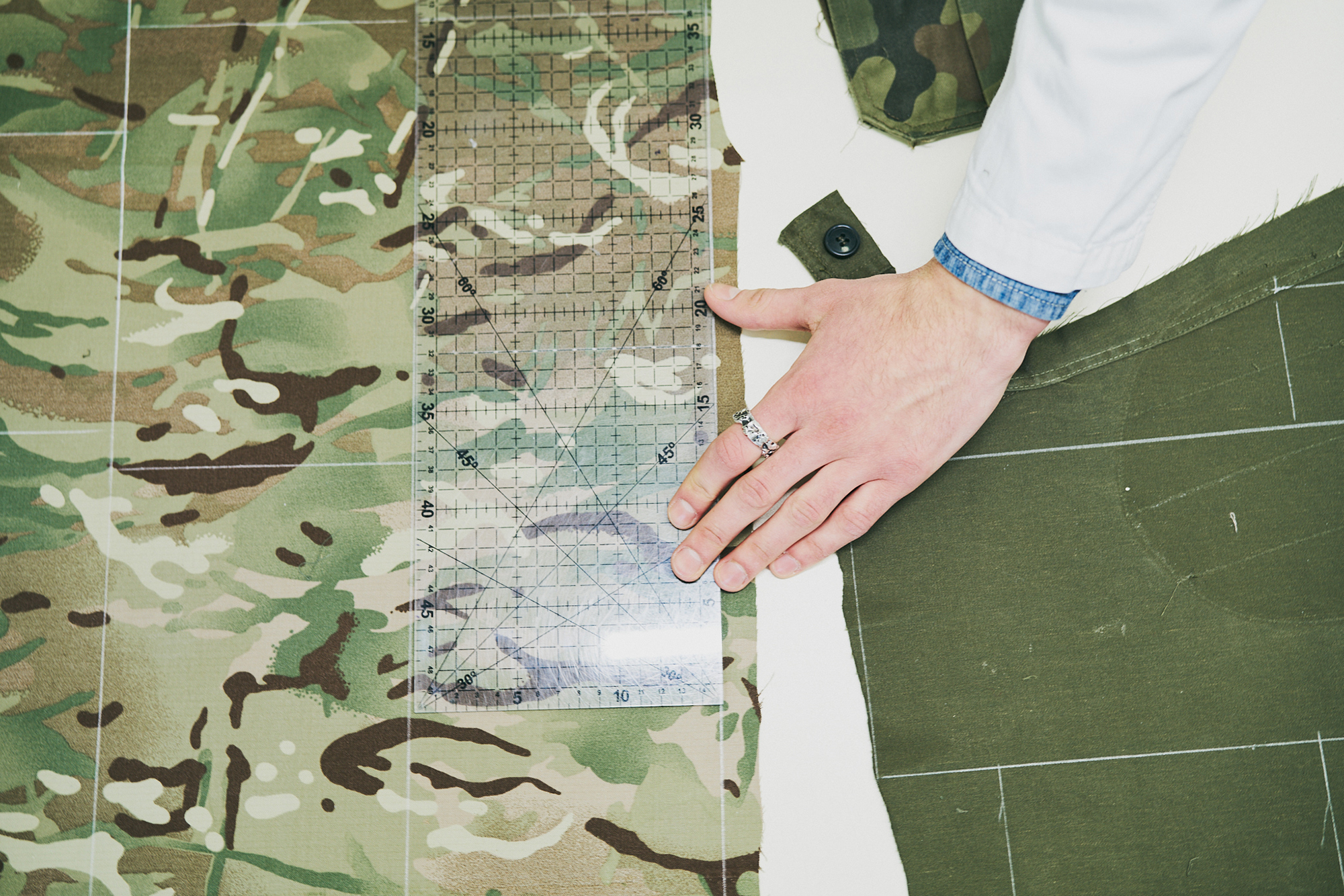
07. You proposed emphasizing the sashiko technique in our joint collection. Tell us more about this process.
Since Japanese masters made me fall in love with tailoring, I practiced sashiko from the very beginning. He copied them and embroidered some traditional and not-so-polish patterns. I was mesmerized by the white dots on the dark blue fabric and their cultural and historical component. Now, I see sashiko as a tool for creating an artistic composition. That's good.
In its essence, sashiko is a simple "forward needle" hand embroidery technique. All you need is a thick thread and a needle. In the past, clothes were daubed or decorated in this way in Japan.
The amount of embroidery we wanted to do for our collection was unreal for our hands, so I bought a Japanese sashiko machine. It is a fantastic thing, but not a magic wand. Even with it, a stitch of fabric for the entire circulation took a couple of hundred hours. And we used 15 thousand meters of heavy cotton thread for the seams. Nevertheless, I like the result.
08. What item from our collection do you like the most?
One of my favorite pieces from the entire collection is the ripped denim and sashiko Panama. The high-quality piece came out.
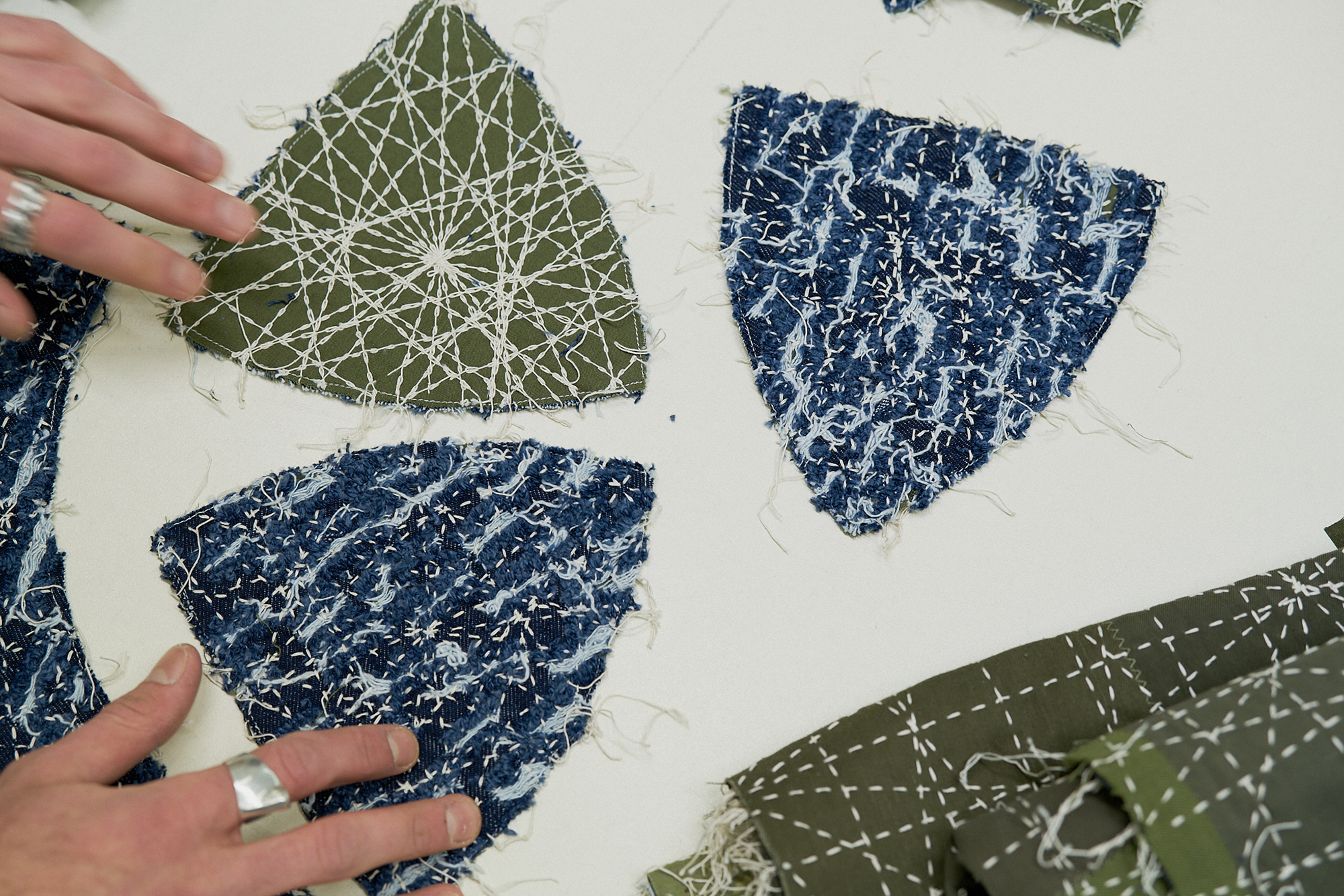
09. Our country is currently experiencing difficult times. How does the war affect you, and what do you do?
No doubt it had a significant impact. There was a feeling that you should not postpone anything and wait for a better moment tomorrow. Half a year after the invasion, we moved from Poltava to Kyiv. We immediately faced new challenges, difficulties, living conditions, and winter blackouts. We had to revise our approaches to work and creativity.
However, these conditions generally force us to move quickly, which positively affects the project and me. Without previous training and a financial cushion, keeping up with such volatility would hardly be realistic.
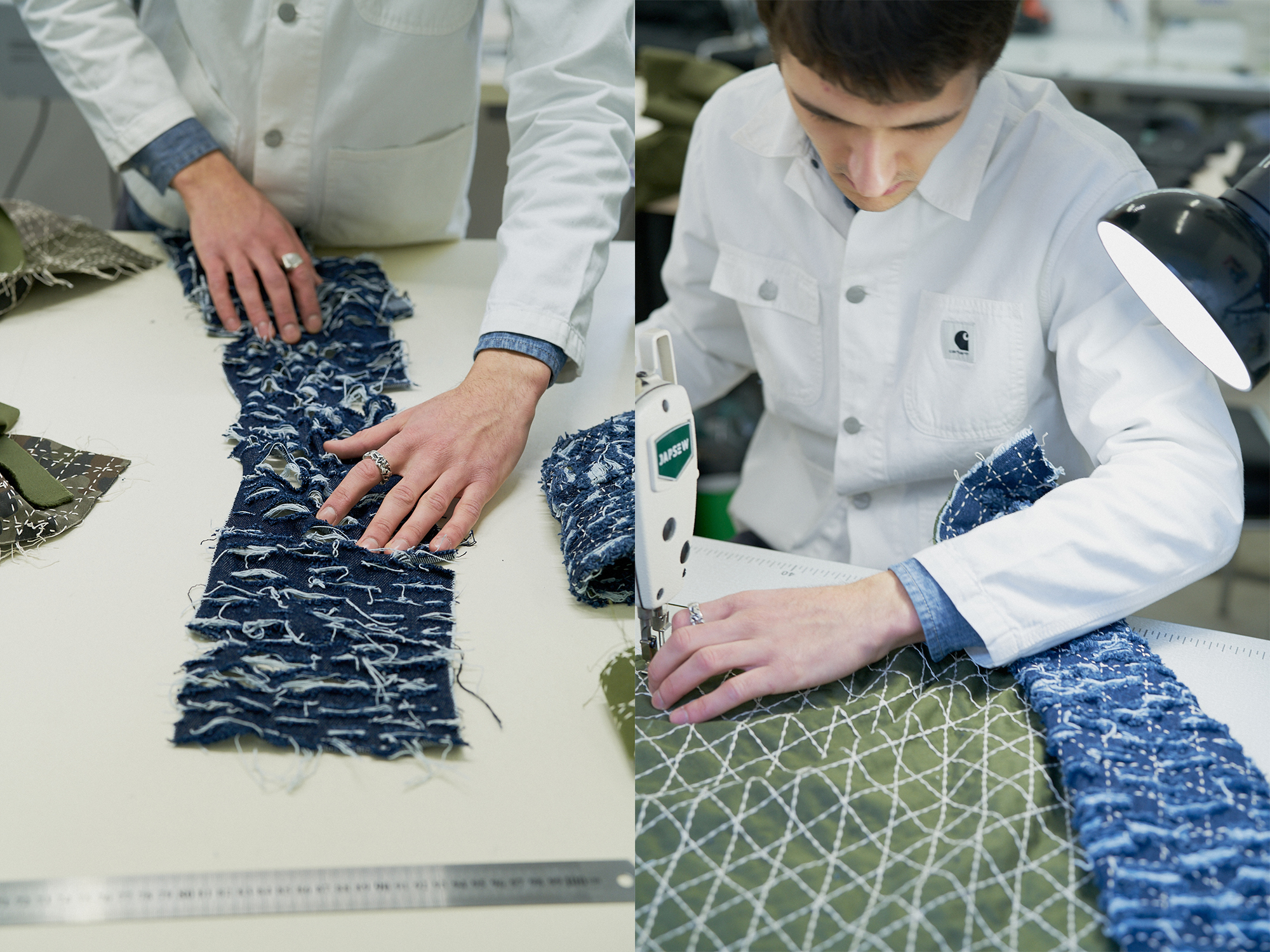
10. What are you currently working on, and what can we expect from you shortly?
Now, I am as ambitious as possible. The main goal for this year is to build a system, understand our capabilities, and experiment. We are developing a line of classic work silhouettes, which we plan to use to make capsule drops. Regarding some nuances, I would like to work more with darning and patching. I've collected a couple of dozen vintage crisp jeans. I will play with them.
But, after working on a collaboration, I want to take a little break from manual work.:)
